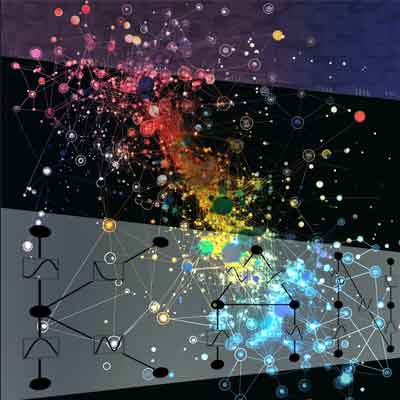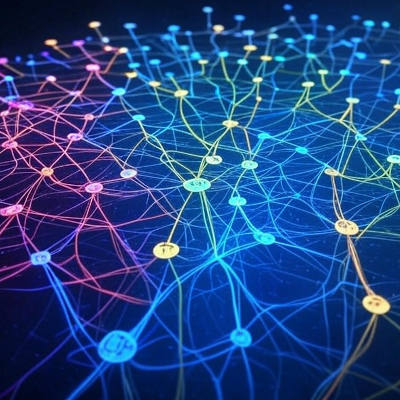Exploring Geometry-Informed Neural Networks: A Data-Free Approach to Shape Generation
Jul. 29, 2024. 3 mins. read.
34 Interactions
Geometry-Informed Neural Networks (GINNs) transform shape generation by using geometric constraints and neural fields, enabling data-free training and diverse solutions across computer graphics, engineering, and medical imaging.
In the ever-evolving landscape of machine learning and computer graphics, the introduction of Geometry-Informed Neural Networks (GINNs) marks a significant milestone. Developed by Arturs Berzins, Andreas Radler, Sebastian Sanokowski, Sepp Hochreiter, and Johannes Brandstetter, GINNs offer a novel approach to training shape generative models without relying on extensive datasets. This article delves into the core concepts and implications of GINNs, shedding light on their potential to transform various domains where data scarcity has been a persistent challenge.
The Challenge of Data Scarcity
The traditional approach to training neural networks, particularly in the realm of shape generation, heavily relies on large, annotated datasets. These datasets provide the necessary examples for the network to learn and generalize patterns. However, in fields like computer graphics, design, and engineering, acquiring such extensive datasets is often impractical. The lack of available data hampers the application of state-of-the-art supervised learning methods, necessitating alternative strategies.
Introducing Geometry-Informed Neural Networks
Geometry-Informed Neural Networks (GINNs) present a paradigm shift by enabling the training of shape generative models without any data. The core idea behind GINNs involves three key components:
- Learning Under Constraints: GINNs leverage geometric constraints inherent to the shapes being modeled. These constraints guide the learning process, ensuring that the generated shapes adhere to the desired geometric properties.
- Neural Fields as a Representation: Instead of relying on discrete data points, GINNs utilize neural fields. Neural fields offer a continuous representation of shapes, making them well-suited for capturing intricate geometric details.
- Generating Diverse Solutions: One of the standout features of GINNs is their ability to generate multiple solutions for under-determined problems. This capability is crucial in scenarios where a single correct solution does not exist, allowing for a broader exploration of the solution space.

Applications and Results
The researchers applied GINNs to a variety of two and three-dimensional problems, each with increasing levels of complexity. The results were promising, demonstrating the feasibility of training shape generative models in a data-free setting. This breakthrough has significant implications for several fields:
- Computer Graphics: Artists and designers can leverage GINNs to create complex shapes and models without needing extensive datasets. This could streamline the creative process and reduce the dependency on pre-existing data.
- Engineering: Engineers can utilize GINNs to design and optimize structures where obtaining a comprehensive dataset is challenging. The ability to generate diverse solutions allows for innovative approaches to problem-solving.
- Medical Imaging: In medical fields where annotated datasets are scarce, GINNs can assist in generating accurate models of anatomical structures, aiding in diagnosis and treatment planning.
Future Directions
The introduction of GINNs opens several exciting research directions. The potential to expand the application of generative models into domains with sparse data is particularly noteworthy. Future research could focus on refining the techniques used in GINNs, exploring new applications, and integrating GINNs with other machine learning paradigms to further enhance their capabilities.
Conclusion
Geometry-Informed Neural Networks represent a groundbreaking advancement in the field of shape generation. By enabling the training of generative models without relying on extensive datasets, GINNs address a critical limitation in current machine learning methodologies. The work of Berzins, Radler, Sanokowski, Hochreiter, and Brandstetter paves the way for innovative applications across various domains, highlighting the transformative potential of this new paradigm.
For those interested in exploring the detailed mechanics and applications of GINNs, the original research paper is available here. This pioneering work is poised to inspire further research and development in the exciting intersection of geometry and neural networks.
Reference
Berzins, A., Radler, A., Sanokowski, S., Hochreiter, S., & Brandstetter, J. (2024, February 21). Geometry-Informed neural networks. arXiv.org. https://arxiv.org/abs/2402.14009
Let us know your thoughts! Sign up for a Mindplex account now, join our Telegram, or follow us on Twitter.


.png)

.png)


.png)










10 Comments
10 thoughts on “Exploring Geometry-Informed Neural Networks: A Data-Free Approach to Shape Generation”
The work by Berzins and team showcases the powerful potential of combining geometry with neural networks, opening up exciting new possibilities for various fields. Definitely a big step forward in machine learning!
🟨 😴 😡 ❌ 🤮 💩
This article highlights the innovative Geometry-Informed Neural Networks (GINNs), offering a data-free approach to shape generation with significant implications for fields like computer graphics, engineering, and medical imaging. Developed by Berzins, Radler, Sanokowski, Hochreiter, and Brandstetter, GINNs leverage geometric constraints and neural fields to generate diverse solutions, addressing the challenge of data scarcity in various applications.
🟨 😴 😡 ❌ 🤮 💩
this article highlights a groundbreaking approach to shape generation that bypasses the need for extensive datasets. By using geometric constraints and neural fields, GINNs enable diverse and data-free model training, offering transformative potential in fields like computer graphics, engineering, and medical imaging. Exciting developments ahead!
🟨 😴 😡 ❌ 🤮 💩
The explanation of Tyche's two variants, Tyche-TS and Tyche-IS, and their respective methodologies is well-articulated, showcasing how they enhance segmentation diversity and reduce the need for retraining.
🟨 😴 😡 ❌ 🤮 💩
The introduction of Geometry-Informed Neural Networks (GINNs) is a significant advancement in the field of generative modeling. By eliminating the reliance on large datasets, GINNs open up new possibilities for shape generation in domains with limited data availability.
The concept of learning under geometric constraints and utilizing neural fields is particularly innovative. GINNs' ability to produce diverse solutions for underdetermined problems further enhances their potential.
While the article provides a solid foundation, exploring the specific geometric constraints implemented in the GINNs framework would provide deeper insights. Additionally, comparing the performance of GINNs to traditional data-driven methods in specific applications could offer valuable benchmarks.
🟨 😴 😡 ❌ 🤮 💩
Comprehensive overview of the transformative potential of Geometry-Informed Neural Networks (GINNs) in enabling data-free shape generation across diverse domains, with implications for computer graphics, engineering, and medical imaging.
🟨 😴 😡 ❌ 🤮 💩
What an insightful article! Geometry-Informed Neural Networks (GINNs) ability to generate shape models without extensive datasets is truly groundbreaking, especially for domains where data scarcity has been a major hurdle. The potential applications in computer graphics, engineering, and medical imaging are particularly exciting. Kudos to the researchers for this innovative approach that leverages geometric constraints and neural fields to create diverse solutions. Looking forward to seeing how this technology evolves and impacts various industries!
🟨 😴 😡 ❌ 🤮 💩
Geometry-informed neural networks offer a fascinating approach to shape generation without relying on extensive datasets. This method not only showcases the potential of neural networks to understand and replicate complex geometric structures but also opens up new possibilities for fields like computer graphics, architecture, and design. It's intriguing to consider how this data-free approach could streamline creative processes and inspire innovative solutions across various industries. The future of AI-driven design looks incredibly promising with such advancements.
🟨 😴 😡 ❌ 🤮 💩
A good peice
🟨 😴 😡 ❌ 🤮 💩
The introduction of GINNs represents a remarkable advancement in shape generative modeling, particularly in data-scarce domains. By leveraging geometric constraints and neural fields. great article.
🟨 😴 😡 ❌ 🤮 💩